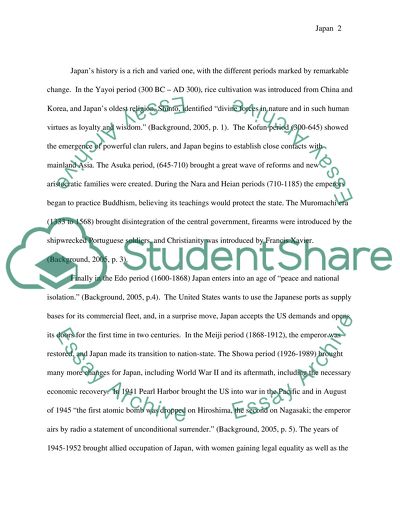Cite this document
(The History and Culture of Japan Essay Example | Topics and Well Written Essays - 3000 words, n.d.)
The History and Culture of Japan Essay Example | Topics and Well Written Essays - 3000 words. https://studentshare.org/history/1536640-american-firm-opening-branch-in-japan
The History and Culture of Japan Essay Example | Topics and Well Written Essays - 3000 words. https://studentshare.org/history/1536640-american-firm-opening-branch-in-japan
(The History and Culture of Japan Essay Example | Topics and Well Written Essays - 3000 Words)
The History and Culture of Japan Essay Example | Topics and Well Written Essays - 3000 Words. https://studentshare.org/history/1536640-american-firm-opening-branch-in-japan.
The History and Culture of Japan Essay Example | Topics and Well Written Essays - 3000 Words. https://studentshare.org/history/1536640-american-firm-opening-branch-in-japan.
“The History and Culture of Japan Essay Example | Topics and Well Written Essays - 3000 Words”. https://studentshare.org/history/1536640-american-firm-opening-branch-in-japan.


